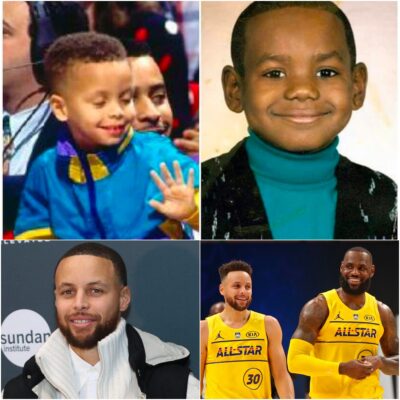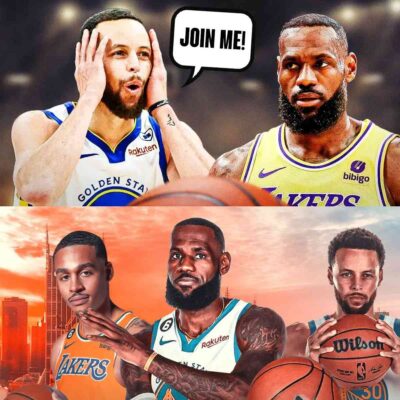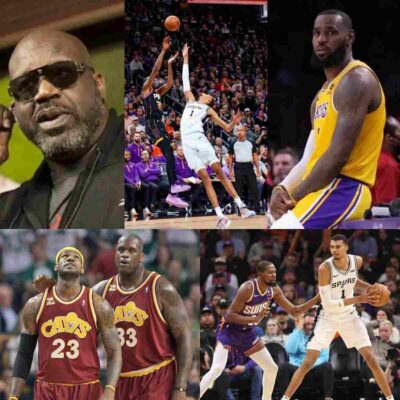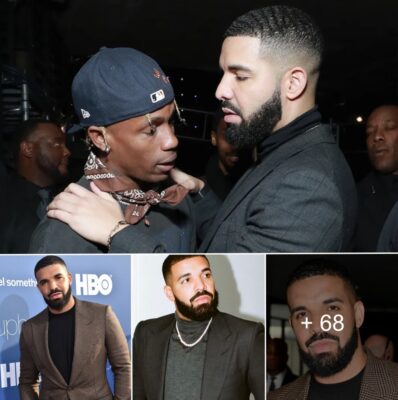The more lenient terms on extensions in the latest version of the CBA, plus the ability of the game’s biggest stars to sign supermax deals two years before they hit free agency, have made it increasingly rare for the game’s most elite talents to ever hit the market. Players such as Steph Curry and Damian Lillard could very well go their entire careers without becoming free agents.
The mid-decade cap spike that made extensions fruitless is now a thing of the past too, with cap smoothing locked in for the future to assure Durant-to-the-Warriors scenarios become increasingly unlikely.
So, when you look at the top names on this year’s free-agent market, you might find yourself slightly underwhelmed. Not one of the 15 players who made All-NBA (and only one of the 27 All-Star selections) is a free agent or a likely free agent. The best players on this market are talented but flawed.
Nonetheless, at a lower level, free agency is as vibrant as ever. Perhaps even more so. Shorter contracts have made turnover much greater just below the All-Star level, while the incoming CBA rules make it more favorable to be a cap space team and force much tougher choices for the league’s profligate spenders.
The result is a free-agent market short on stars but as deep in quality starters as any I can remember. Get used to this because the future looks similar. For instance, the only All-Star likely to be a free agent in 2024 is Sacramento’s Domantas Sabonis; all the others who could join him will likely end up extending their deals.
That has important strategic implications as well; cap space is more a tactical strike for a third starter than a team-building Plan A unto itself.
OK, enough of my preamble; let’s get to the fun stuff. As usual, I evaluated every likely free agent using my BORD$ method for projecting contract value; the result is an expectation of the player’s worth for the 2023-24 season based on a projected salary cap of $134 million.
Obviously, if you’re looking at multiyear deals, you might discount that for older players and increase it for younger ones, but BORD$ at least gives us an apples-to-apples comparison for what players might be worth next season. However, note that teams signing younger players to longer deals will be especially favorable right now, due to likely 10 percent annual cap increases once the next media rights contract is signed.
We’ll update our list as free agency goes along and players opt in, opt out or reappear on the market via buyouts and waivers. In addition to this top list of free agents, I’ll have full lists of free agents by position next week.
Finally, note that all ages are as of the start of free agency on July 1.
TIER I: The All-Stars
1. Kyrie Irving, PG, 31, Dallas: $50,555,884
There is a lot more that goes into having Irving on your team than BORD$ is able to process, which is why sentient beings may put a lower value on Irving than my computer formula does. Between injuries, insolence and inoculations (or lack thereof), Irving hasn’t played more than 60 games in a season in four years; he’s only had three seasons in his 12 as a pro that would make him award-eligible (more than 65 games). (Odd fact: When Irving did play, he led the league in minutes per game.)
On the other hand, he’s also an offensive whirlwind who averaged 27 points a game on 63.4 percent true shooting in 20 games as a Maverick last season. Irving’s BORD$ pegs him being worth more than his $46.5 million max for the coming season, but the two more pressing questions are whether the collateral locker room damage is worth it, and whether he can continue to stay this productive on a deal that pushes into his mid-30s.
Given how many teams lack either the cap space to sign Irving or the willingness to put up with him, Dallas may be able to push back and offer him something short of his four-year, $210 million max (let alone the five-year version for $272 million).
ADVERTISEMENT
Dallas could also go longer on years and shorter on money, which would be appealing from managing its luxury-tax situation. The Mavs are $48 million from the projected tax line before paying Irving a cent and would still have five open roster spots to fill after signing Irving.
As for the Lakers, L.A. can’t get anywhere close to Irving’s max in any realistic cap room scenario. A sign-and-trade, however, would get kind of wacky but is theoretically possible. The Lakers would need to pick up Mo Bamba’s guarantee, guarantee Shaq Harrison’s deal, pick up Malik Beasley’s option and sign their first-round pick (17th). After a month, they could trade the pick along with Bamba, Beasley, Harrison and Max Christie and pay Irving up to $43 million for the first season of a four-year deal totaling $187 million.
There are other permutations, such as including D’Angelo Russell or Rui Hachimura in a sign-and-trade. Sign-and-trading one of Wenyen Gabriel, Troy Brown or Tristan Thompson could also bump up Irving’s first-year salary another $1.5 million or so. (I also am presuming the Lakers would have to throw another pick into this, but it has no cap implications.)
However, a sign-and-trade would also hard cap the Lakers, who would have only four players under contract, need to sign at least 10 more and have only about $40 million to pull it off — including re-signing Austin Reaves and Hachimura. For that reason, the lower Irving’s first-year salary is at the end of the deal, the more plausible a sign-and-trade is from L.A.’s end … but the less plausible it is for Irving.
2. James Harden, SG, 33, Philadelphia (player option): $47,075,783
According to our Shams Charania, Harden is torn between returning to Philadelphia and gunning for a championship or returning to Houston and going 33-49. Either way, he’ll be opting out of his deal for 2023-24 and $35.6 million, a relative bargain he accepted to allow the Sixers to sign P.J. Tucker and still stay below the tax apron.
The thing that makes the two possibilities financially more even is the league’s “over-38” rule, which prevents a player of Harden’s age from signing a five-year deal for the full max. Normally that guaranteed fifth year would be the kicker that would allow Philadelphia to win any bidding war, but instead, the advantage may be with Houston: the Sixers can offer more on a four-year deal ($210 million to $201 million), but because Texas has no state income tax, the overall money is basically even.
Given Harden’s age and conditioning, this is likely too much money for Harden no matter what: BORD$ sees the first year as fine, and one could possibly justify this from Philly’s perspective as a strategic overpay to try squeezing a title from Joel Embiid’s prime.
Note that in the absence of other moves, a four-year max for Harden would also push Philly to the tax apron with only 10 players under contract, possibly complicating efforts to re-sign free agents such as Paul Reed, Shake Milton and Jalen McDaniels and using their midlevel exception. The same contract in Houston would have few tax implications: Houston projects to be more than $60 million below the cap, and Jalen Green and Alperen Şengün don’t become free agents until 2025.
3. Fred VanVleet, PG, 29, Toronto (player option): $46,873,792
I sometimes wonder why there is such intense focus on Irving and the Lakers when VanVleet is nearly as good and vastly more reliable. This BORD$ valuation is slightly bloated by Nick Nurse’s insistence on playing his starters 47.9 minutes per game, resulting in VanVleet’s minutes estimate being unrealistically high for what he’s likely to face next season — whether under a new coach in Toronto or as a free agent.
The other twist here is that VanVleet only has seven years of experience, which means his max is “just” $40.2 million — a relative bargain, at least in the first year of a multi-year deal. A good deal structure for him would be three years with a fourth-year player option, which lets him cash in on a 10-year veteran max for 35 percent of the cap if he’s still playing at a high level in 2026.
VanVleet certainly will opt out of his final year at $22.8 million and has no incentive to sign an extension yet because even the revised extension rules in the new CBA won’t net him nearly enough.
4. Kristaps Porziņģis, C, 27, Washington (player option): $39,132,351
Porziņģis can opt in for $36 million for the coming season; he can also opt in to that year and use it as a platform for a four-year extension that totals $209 million over the next half decade. Going out that far for a player who has struggled with injuries to his lower extremities feels like an unnecessary risk for a franchise that isn’t going anywhere important in the next two seasons, although that has never stopped the Wizards before.
While Porziņģis will only be 28 on opening day and played at a near-All-Star level this season, the declining value of bigs and trepidation over his health is likely to put a damper on his market.
If Washington wants to run it back, the Wizards have about $60 million in wiggle room to re-sign Porziņģis and Kyle Kuzma and sign a free-agent point guard with their non-taxpayer midlevel exception.
One wonders if an accommodation can be reached where Porziņģis signs a sub-max five-year deal in the $30 million a year range — the type only Washington could give him — that has triggers to guarantee the fifth year. Such a contract would let Washington skirt the tax this year while it figures out its next steps under new management and still leaves the Wizards with a tradeable contact for when they decide to blow it up. (Please?)
If the Wizards decide to rebuild right away and Porziņģis decides to opt out, he’ll be the best big man on the market. It’s just not clear what that gets a player in 2023.
TIER II: High-end role players
5. Miles Bridges, PF, 25, Charlotte (restricted): $29,689,570
Bridges had a valuation of $30.5 million when I did this exercise last year; that valuation changed to $33.6 million this time around because the cap is projected to go up by just over 10 percent.
Of course, any discussion of Bridges has to go well beyond a statistical projection. He sat out the season after an offseason domestic violence incident involving the mother of his children. He pleaded no contest to a felony domestic violence charge in November and faces three years of probation but no jail time as part of a deal with prosecutors. He will begin the 2023-24 season by serving an additional 10-game suspension (20 games of his suspension are already considered served).
With Bridges guaranteed to be unavailable for a chunk of the schedule, I prorated his valuation for the coming season downward by an equivalent amount, which is how I landed at $29.69 million. One can argue he should be paid more than that because, in any future contract years, he won’t have the suspension hanging over him; one can also probably more forcefully argue he should be paid less given the cause of his suspension.
Bridges is still technically a restricted free agent, meaning Charlotte could match an offer sheet from another team. That likely would further mute any market for Bridges, who otherwise would be a popular free agent as a productive, athletic, 25-year-old combo forward.
Finally, note that only about 96.5 percent percent of Bridges’ salary in 2023-24 will count against his team’s luxury-tax calculation because of the suspension. If he were paid $20 million, for example, only $19.3 million of it would count, because half the amount he loses to suspension (1/145th of his salary for each of the 10 games) would be deducted from the tax calculation.
6. Josh Hart, SG, 28, New York (player option): $28,607,658
Hart was outstanding after his trade to New York and had a really good stretch in the second half of 2021-22 in the brief window between his trade to Portland and the Blazers pivoting to abject tanking.
Nonetheless, even the most homerific Knicks fan would probably admit that $28.6 million feels like a lofty valuation for Hart. His career shooting (35.0 percent from 3 on low volume), age (28) and size (6-foot-5 if you pull on his toes) all weigh against paying him as a top-dozen shooting guard like this valuation implies.
That said, New York won big by bringing him in from Portland for the cost of a late first. Hart surely will opt out of his below-market contract, but one presumes he’ll be back in New York on a multi-year deal that pays him like a plus wing starter (in the $20 million range) for the next three or four years.
7. D’Angelo Russell, PG, 27, L.A. Lakers: $26,867,883
This high a valuation for Russell may surprise some people, but despite Russell’s shortcomings as a defender and penetrator, few can match his skill level from middle distance and the 3-point line. Russell shot insanely well this season, with his 54.8 percent mark on 2s being notable for a guard who rarely gets to the rim and his 39.6 percent from 3 a career best. Russell was awful in the Western Conference finals, but he was able to stay on the floor in the first two rounds against Ja Morant and Steph Curry because of his shot making.
Overall he was 41st in offensive BPM this season; most of the guys in the top 40 are on max or near-max deals, and at 27, Russell is entering his prime. I get it if you’re a bit underwhelmed by the idea of Russell in a high-stakes postseason game, but the Lakers could do a lot worse than bringing him back. I should note that his contract also offers sign-and-trade possibilities if the Lakers go looking for upgrades.
8. Khris Middleton, SF, 31, Milwaukee (player option): $26,822,042
Middleton has a player option for $40.4 million, and there is no way he’s getting a salary like that on the open market. But this may be a situation where he and the Bucks can work out an arrangement that sees him opt out and re-sign a longer-term deal for lower dollars. First, that’s more in line with what Middleton’s value is these days after a couple of injury-wracked seasons, but second, the Bucks’ tax situation almost demands it.
Getting Middleton’s salary down into the mid-$20-million range annually is what can allow Milwaukee to re-sign Brook Lopez (see below) and still remain below the first tax apron. A four-year deal in the $100 million range would be the equivalent of a three-year, $60 million extension but would potentially save the Bucks tens of millions in luxury tax in 2023-24.
9. Cam Johnson, PF, 27, Brooklyn (restricted): $26,368,306
Don’t be surprised if the bidding on Johnson gets a little wacky, simply because rival teams know they might be able to spook the Nets from matching if they can present a strong offer sheet. Brooklyn enters the offseason just $10 million from the projected tax line; matching a strong sheet for Johnson would push the Nets past the first tax apron unless they can ditch salary someplace else. (Joe Harris and Patty Mills would be the likely places to start.)
The other consideration, of course, is that Johnson is such a plug-and-play fit in most systems because he can competently guard both forward spots, runs the floor and shoots 39.3 percent career from 3. There isn’t enough shot creation here for star-level upside, which is why teams should be careful going too high up the salary ladder, but Johnson is a valuable piece who seems likely to have multiple suitors.

Cam Johnson (Wendell Cruz / USA Today)
10. Jakob Poeltl, C, 27, Toronto: $25,260,040
The midseason trade to the Raptors means that Poeltl is now literally a dinosaur center. The issue for him in free agency is how much is such a player really worth in today’s NBA? Even an elite version of that player, such as Poeltl, has limitations. Offensively, he can pass, screen and shoot floaters but has no 3-point range and has to be taken off the floor in hack-a-Jak situations; defensively, he is an awesome rim protector who rebounds but doesn’t fare as well in switching schemes.
That skill set has been devaluated in the modern NBA, but Poeltl is one of the best versions of that archetype. Additionally, the Raptors seem pot-committed after giving up a lightly protected first (top-six through 2026) to add Poeltl to an average roster still in flux. This BORD$ value may be slightly overenthusiastic, but I’m willing to bet the first digit on Poeltl’s 2023-24 salary is a 2.
11. Draymond Green, PF, 33, Golden State (player option): $23,789,491
Green is a fascinating case because he’s probably more valuable to the Warriors than he is to any other team, and because his player option for $27.6 million offers numerous opportunities, none of which are totally clear as the best option. Green could opt in for another season, opt out and try to ink a longer deal right now or opt in and sign an extension using that salary as a base. Depending on your valuation of him, all three are plausible.
Given Green’s age and diminished offensive value, I’d argue the best course for Golden State is to try to minimize this year’s staggering luxury-tax bill as much as possible by having Green opt out and sign for three or four years at a lower number. Even if the raises in such a deal lead to an overpay as Green gets deeper into his 30s, the rising cap and expiration of Klay Thompson’s whale contract will combine to soften the sting.
Relative to the tax, especially, this feels like a really logical play, as the potential savings on the Warriors’ 2023-24 tax bill from even a small pay cut are staggering.
The devil is in the details: What sounds fair for both sides? Three years at $70 million would line Green’s future up with Curry’s, leaving both contracts expiring in 2026. Starting such a deal at $21.6 million rather than his current $27.6 million would save the Warriors as much as $40 million in luxury tax, depending on their other moves.
12. Austin Reaves, SG, 25, L.A. Lakers (restricted): $22,865,329
Is Austin Reaves worth the max “Gilbert Arenas” offer sheet? It looks like he might be. A breakout star in the Lakers’ run to the conference finals, Reaves is the rare case of a player limited by the so-called Arenas rule because he signed a two-year contract when he entered the league.
That limits him to signing with the Lakers for the league’s average salary, projected at $12 million a year. However, an offer sheet from another team has different rules. It can pay him the midlevel exception in the first two years, (starting at $11.4 million), and the max salary in the third and fourth years of the contract, which would come in at $36.8 and $38.5 million, respectively.
Such an offer sheet would pay him a total of $98 million over four years, which is not entirely out of line with his BORD$ valuation. The twist is that the Lakers can’t offer this to Reaves: The maximum L.A. can do on its own is $53 million over four years. That larger deal would have to come in the form of an offer sheet from another team, one with at least $25 million in cap space. There are softer versions of this that are possible; for example, bumping up the third and fourth years to a mere $25 million would require only $18 million in cap room.
The good news for the Lakers is that their cap sheet can handle this offer sheet structure, because the Reaves salary bump would happen right as LeBron James’s contract expires (if he picks up his player option) at the end of 2025. That makes it less likely another team will offer it — why burn through the entire moratorium plus a one-day matching period on an offer sheet that will just get matched? — and likely leave L.A. in a strong position to retain Reaves at midlevel exception-type money.
13. Gary Trent, Jr. SG, 24, Toronto (player option): $21,983,792
Trent has a player option for $18.6 million, and it’s possible he decides to opt in and try again in free agency next year. The tea leaves, however, seem pointed more strongly toward his opting out and, most likely, moving on from a Toronto team that doesn’t seem to have the financial wherewithal to keep all three of Fred VanVleet, Jakob Poeltl and Trent.
Trent can shoot and is still young, which should produce a frothy market given that rebuilding, shooting-starved teams such as Houston, San Antonio, Orlando and Detroit are the ones with cap space this summer. The key for those clubs will be to avoid repeating Toronto’s error; the Raptors inked Trent to a three-year extension with a player option in 2021, setting the stage for him to bail after two years at age 24. Look for his next club to sign him to a four-year deal that lets them ride the rising salary cap while Trent moves into what should be his prime years.
TIER III: Good players who could maybe do more
14. Tre Jones, PG, 23, San Antonio (restricted): $20,909,844
This valuation is perhaps a bit surprising. Jones is young and low-key had a solid year for an overmatched San Antonio squad, but the question still lingers about whether he can be more than a low-mistake setup guy. Jones has a solid floater game and a ridiculous assist-turnover ratio, but he’s only 6-1 and shoots 27.1 percent career from 3. He probably projects better as a high-level backup than as a long-term starter, which would justify a salary in the $50 million range over three years but not as high as this BORD$ valuation wants to go.
Jones is a restricted free agent on a rebuilding Spurs team with $35 million in projected cap space, so rival teams are unlikely to view him as a gettable target unless they go crazy on an offer sheet. This could mute his market a bit, but the other angle for San Antonio is that it could sign him to a declining money contract. The Spurs don’t really need the extra cap room right now, so they can afford to start him at a high number, but signing for three or four years with 8 percent salary declines could provide great value in the out years.
For example, a four-year, $70 million deal that starts him at $20 million in 2023-24 might seem expensive, but in his age-27 season in 2026-27, the Spurs would pay him just $15 million when the cap could very well be up to $178 million (if the 10 percent annual limits in the next CBA are hit).
15. Jordan Clarkson, SG, 31, Utah (player option): $19,712,238
Clarkson has a player option for $14.2 million that he is likely to decline and hit unrestricted free agency … that is, unless the Jazz decide to get funky.
Because Utah is so far below the salary cap for the coming season, one option for the Jazz would be to have Clarkson opt in and then immediately renegotiate and extend his deal to put a large cap number on the books for 2023-24 and much smaller ones in the extension years. At Clarkson’s age, a two-year extension probably makes more sense than three years, but they could get the number low enough that even three would be a huge positive (not to mention highly tradeable).
For instance, let’s say the Jazz and Clarkson determine he’s worth $65 million over the next four years. The standard way to do this might be to sign a contract that starts at roughly $15 million and contains 8 percent raises.
The more creative way to do this, however, would be for Clarkson to opt in then wait until the third anniversary of his contact signing, which because of the COVID-19 year isn’t until Nov. 23. He would then be renegotiate-and-extend eligible.
At that point, the Jazz would use $10 million of their cap room to boost his 2023-24 salary to $24.2 million. It would be tough to use much more than this; the Jazz need to at least spend up to the salary floor by opening day or face additional penalties in the new CBA, so the maximum amount they would want to stay under for the purposes of this contract is $13.4 million.
By rule, his salary for 2024-25 is allowed to drop by a maximum of 40 percent, to $14.5 million. Then they would decrease it by the maximum allowable 8 percent the next two seasons, to $13.4 million in 2025-26 and $12.2 million in 2026-27. Over the four years, Clarkson would make his $65 million, but Utah would have front-loaded the money to minimize the impact on its cap.
Or, Clarkson could just opt out and sign someplace else.
16. P.J. Washington, PF, 24, Charlotte (restricted): $19,054,564
Washington is a tricky player to evaluate, a jack-of-all-trades, master-of-none type. He’s theoretically a stretch big but isn’t quite so devastating from the perimeter that it induces panic (36.6 percent career on moderate volume); he’s theoretically able to offer value as a small-ball five but has struggled to defend at any position; and he’s theoretically a power player but had a worse rebound rate than Kelly Oubre this season.
But Washington showed strides at both ends last season, especially late when a left-for-dead Charlotte team nonetheless strung together several victories. His feet still betray him sometimes in space, but his defense definitely got better; offensively, he was much more assertive about looking to score inside the arc and did it without losing efficiency.
At 24, he may be on the verge of breaking out into more of a fully fledged starting four, and his timing is impeccable heading into restricted free agency. With cap space teams like Indiana, Oklahoma City and, perhaps, Sacramento, needing young help at the position, he may become a popular guy in early July.
Scaring off Charlotte with an offer sheet could be difficult, however, as the Hornets should have enough room below the tax line to absorb re-signing Bridges, Washington and Oubre at market salaries if they wish.
17. Coby White, SG, 23, Chicago (restricted): $18,678,821
If you didn’t watch the Bulls a lot this year, I can hardly blame you. But I can tell you White got significantly better over the course of the year and, at 23, has a pretty strong case to be paid as a top third guard. His restricted free agent status will likely chill his market a bit, especially since the Bulls are trying to win this year (a separate line of inquiry worthy of its own column) and can match any offer sheet.
Paying White as a third guard has more utility for the Bulls than some other teams as well, given that Alex Caruso is constantly injured and Zach LaVine has battled knee issues. I’d be surprised if White’s deal reaches this BORD$ value, but a multi-year deal above the midlevel exception feels like the sweet spot — say, three years between $45 million and $50 million.
18. Jerami Grant, PF, 29, Portland: $18,560,550
The Blazers seem pot-committed to keeping this group around Damian Lillard together and trying to push the boulder up the hill one more time, but at what cost? Grant is eligible for a four-year, $112 million extension between now and July 1, but even that would seemingly overvalue him based on his age and recent production. Paying him more seems absolutely batty, plus it yanks Portland ever closer to the tax line.
Yet the Blazers also must fret about potential interlopers in the Grant bidding — a return to Detroit, for instance, or the Pacers using their heap of cap space to fill a yawning gap at the four. It certainly seems that whatever deal Grant gets ends up exceeding this BORD$ value, but a nine-figure deal that pays him until he’s 33 still feels like a reach.

Jerami Grant (Stephen Lew / USA Today)
19. Bruce Brown, SF, 26, Denver (player option): $17,764,642
Brown was one of the best 2022 free-agent signings in the league, if not the best, helping the Nuggets to the NBA Finals on a bargain $6.5 million contract. (Although some people had him rated as the top free-agent small forward last summer.)
He’ll likely opt out of the second year of that deal and get paid this summer, with virtually every team with midlevel exception money or more circling him as a possibility. The Nuggets will have no Bird rights on Brown, so the only possibility of his staying is to sign a one-year deal for $7.7 million and then re-sign in Denver as an early Bird rights free agent a year from now for a likely $13.6 million. Even those numbers, however, seem to badly undervalue Brown, so it’s more likely he flies the coop.
20. Dillon Brooks, SF, 27, Memphis: $17,746,207
Under any circumstances? Really? What about the circumstance where you can’t find a starting-caliber small forward with your non-taxpayer midlevel exception?
The minute Memphis said it wasn’t bringing back Brooks, however, he immediately became a hugely interesting free agent for any team with cap space and defensive issues. Coming off a second-team All-Defense selection and in the prime of his career at 27, Brooks should be an attractive target for cap room teams such as Houston, Detroit and Utah who need a defensive stopper and have the ability to go above the midlevel exception on a multi-year deal.
TIER IV: Solid players who help
21. Harrison Barnes, PF, 31, Sacramento: $17,473,621
Barnes isn’t a spring chicken anymore, but he’s been incredible durable, he shoots 37.8 percent from 3 for his career, he still has enough juice off the dribble to attack a closeout, and his strength allows him to hold up well in size mismatches.
That list of strengths made him a great fit in Sacramento this season, but it’s possible the Kings seek an upgrade. If they renounce Barnes, they can generate about $21 million in cap room, even while keeping Trey Lyles’ Bird rights. That might give them an opening to try upgrading to a younger model (such as P.J. Washington above or the Wizards’ Kyle Kuzma), although this is not a power-forward heavy market and the Pacers will likely eat first at the four.
22. Christian Wood, C, 27, Dallas: $17,289,331
Well, that was an interesting ride. The Mavs steadily soured on Wood despite substantial production, partly because of his defense at the five and partly because everything got weird in Dallas during the second half of the season.
Wood is caught somewhat between positions at 6-10, 214 pounds, and might function best as a third big man who can flex between power forward and center. At either spot, he is a huge force offensively, with 3-point range, the ability to attack off the dribble and enough pop to be a lob threat as a rim runner. The other use for him, however, is just as a starting center, especially if he’s paired with a bully four who can crossmatch with him at times.
Wood’s other calling card is that he’s the best big who is clearly available, with the other centers on this list likely returning to their own teams. He should be the first call for any team in need of offensive firepower at the center spot.
23. Donte DiVincenzo, SG, 26, Golden State (player option): $16,280,336
DiVincenzo got what he needed out of his year in Golden State, rehabilitating his value by shooting 39.7 percent from 3 and entering free agency right in his prime. The question is whether anybody values him enough to pay him as a starter with cap space, or whether he tops as a midlevel exception signing for about $52 million over four years. With a paucity of teams with cap space and a crowded shooting guard market, it’s possible he gets squeezed.
Either way, however, he will do far better than the $4.5 million taxpayer MLE he had to settle for last summer. DiVincenzo has a player option for $4.7 million to return to the Warriors, I should note, but there is zero chance he exercises it.
24. Brook Lopez, C, 35, Milwaukee: $16,241,034
The truism with players this old is that it isn’t the money that burns you, it’s the years. Lopez was awesome this season, but he’s 35 and missed nearly all the previous season with back surgery. Between that and his playing the least valuable position, the BORD$ valuation is pretty conservative.
Milwaukee has absolutely no choice but to bring Lopez back and, as noted with Middleton above, has some incentives to extend out the years rather than going high on the money in 2023-24. In Lopez’s case, however, that’s constrained both by the “over-38” rule and by the real possibility that Lopez could decline quickly in the out years on a new contract. I don’t think the money gets quite as low as this BORD$ number suggests, but maybe something in the range of $55 million to $60 million over three years?
25. Grant Williams, PF, 24, Boston (restricted): $15,159,221
Williams is a 6-6 power forward with a career PER of 9.7. And yet, he’s become an indispensable player for one of the best teams in the league because of his ability to defend multiple positions and make open 3-pointers. He’s a 37.9 percent career marksman from deep who offers highly switchable defense, which means he’s much more playoff-viable than most players of this ilk.
Between Williams’ wavering role in the second half of the season and Boston’s luxury-tax situation, some wonder if the Celtics would match a strong offer sheet for Williams; something in the high teens would push Boston to within inches of the punitive second apron. At the same time, it’s hard to see how Boston could replace him in its rotation if he were to walk, and the Celtics could likely move other contracts (notably Danilo Gallinari and Payton Pritchard) to ease their tax burden.











